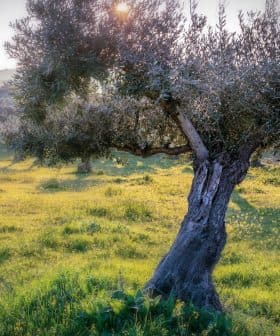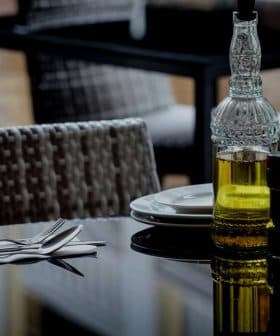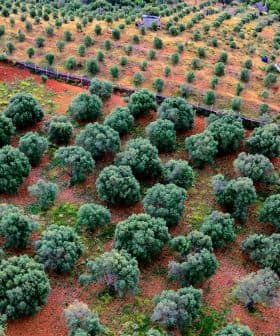A New Era of Olive Farming Dawns in Molise
Authorities, producer associations and farmers are working together in the southern Italian region to restore abandoned groves and attract young farmers.
 Molise, Italy
Molise, Italy A new initiative in Molise aims to promote local organic olive oil production and boost oleotourism in the region, involving public and private entities to create a new Molisan extra virgin olive oil district. The project’s goals include adding value to local olive oil production, restoring abandoned groves, attracting young farmers to the sector, and increasing differentiation of local extra virgin olive oils to add value to the products.
A new initiative is underway in Molise to promote local organic olive oil production and boost oleotourism in the south-central Italian region.
Surrounded by Campania to the south, Puglia and the Adriatic Sea to the east and Abruzzo and Lazio to the north and west, Molise is renowned for its natural parks, mountainous terrain and the olive groves that dot its picturesque landscape.
Quality is the best answer to a competitive market. Renewed olive groves and new farms can make a difference.
Public and private entities – comprising government officials, producers, local agribusiness, researchers and tourism officials in the region – recently announced the creation of a new Molisan extra virgin olive oil district.
The project’s goals are to add value to local olive oil production, restore abandoned groves and attract young farmers to the olive sector.
See Also:Umbrian Villages Steeped in Olive Oil Culture Promote New Tourism InitiativeTraditional Molisan olive growers have suffered from increasingly competitive prices in the international olive oil market. Limited yields combined with high production costs have seen local producers out-competed by lower-cost imported extra virgin olive oils.
Both conditions are considered the main drivers of olive grove abandonment, which breed further problems. According to the initiative’s promoters, the abandoned olive groves serve as fodder for wildfires, contribute to desertification and become breeding grounds for pests and diseases.
On top of that, local officials said olive grove abandonment also leads to more unemployment and contributes to the rural exodus, which often means experts and professionals leaving the area.
Most Molisan producers are small or medium farmers whose groves do not frequently exceed two hectares.
A minority of farms produce high-quality extra virgin olive oil within the specifications of the Molise PDO (Protected Designation of Origin), a European Union certification guaranteeing provenance and quality.
Like in other hilly areas, the overall regional production is significantly exposed to the effect of weather extremes which compound the natural alternate bearing cycle of the olive tree.
In its latest report on the olive sector, the Institute of Services for the Agricultural and Food Market (Ismea) reported that Molise produced 2,823 tons of olive oil during the 2020/21 crop year.
The average Molisan production in the latest four seasons has been estimated at 2,923 tons.
By applying modern sustainable techniques, researching cultivars and expanding olive grove hectares, the district creators plan to increase local olive oil yields while improving quality.
“Quality is the best answer to a competitive market. Renewed olive groves and new farms can make a difference,” Luigi Di Majo, president of the Tourism, Medicine University and Landscape Consortium and head of the new district’s promotion committee, told Olive Oil Times.
“The main goal of the district is to bring 14,000 hectares of olive orchards located in Molise back to optimal production and restore the 3,000 to 4,000 hectares that have been abandoned over time,” he added.
According to the district officials, high-quality olive oil production is the only available strategy.
“Most of the big food retailers buy from a handful of large bottlers which buy enormous quantities of product at the lowest available prices on the market,” they wrote in a memo seen by Olive Oil Times.
“We can not even think to compete with Spanish and Tunisian producers on that front,” the officials added. “At least not until we entirely change our production systems. Instead, we need to value quality and olive oil’s connection with the territory just like we do with wine.”
Di Majo added that one of the district’s goals is to plant 10,000 new hectares of olive groves.
“We aim to find funds for the new plants and the restructuring of the current groves,” he said. “The public funds are expected to cover 100 percent of those investments and include the promotional activities.”
“Still, we need sufficient quantities to launch Molisan extra virgin olive oil onto international markets,” Di Majo added.
The district’s promoters plan to raise at least €10 million in public funding for these goals.
“We are thinking of new plants with a traditional setting based on our high-quality 20 native olive oil cultivars, which will help us better differentiate the extra virgin olive oil produced throughout the region,” the officials wrote in the memo.
They added that most Molisan extra virgin olive oil can be today differentiated in three main flavor profiles, “which are very well known in the olive oil world. Those are a herbaceous profile, a green tomato flavor and a berry scented product.”
Increased differentiation of local extra virgin olive oils is crucial to adding value to the products. Defining specific operating protocols is one of the ways to achieve this.
Local partners will be required to adopt an optimal harvesting period for each of the three sensory profiles and select the suitable cultivars for the new plants, according to those profiles.
The district officials will also help current and new growers to convert to organic farming and follow sustainable best practices with an eye on European and national funds, which will be dedicated to the olive oil sector development in the next few years.
The district will offer new and current farmers technical assistance in the field, help them access the public funds, optimize the use of water resources, certify the traceability of their extra virgin olive oil using blockchain services and participate in e‑commerce opportunities.
The district officials also plan to support olive-focused research, expert training classes, marketing strategies and the development of the regional oleotourism routes.
“Molise is an ideal location for high-quality olive oil production,” Di Majo said. “And it has quite an ancient olive growing tradition that dates back more than 2,000 years, as ancient Roman authors talk of the beautiful olive trees of our region.”
“Two hundred years ago, one of the reforms introduced by Joachim Murat was to plant hundreds of olive trees here, as the oil was also used as lamp fuel,” he added, hinting at the historical and touristic appeal of the Molisean olive growing territory.
According to the district officials, hundreds of new work opportunities will be granted to current and new agribusinesses through the development projects.
Share this article









